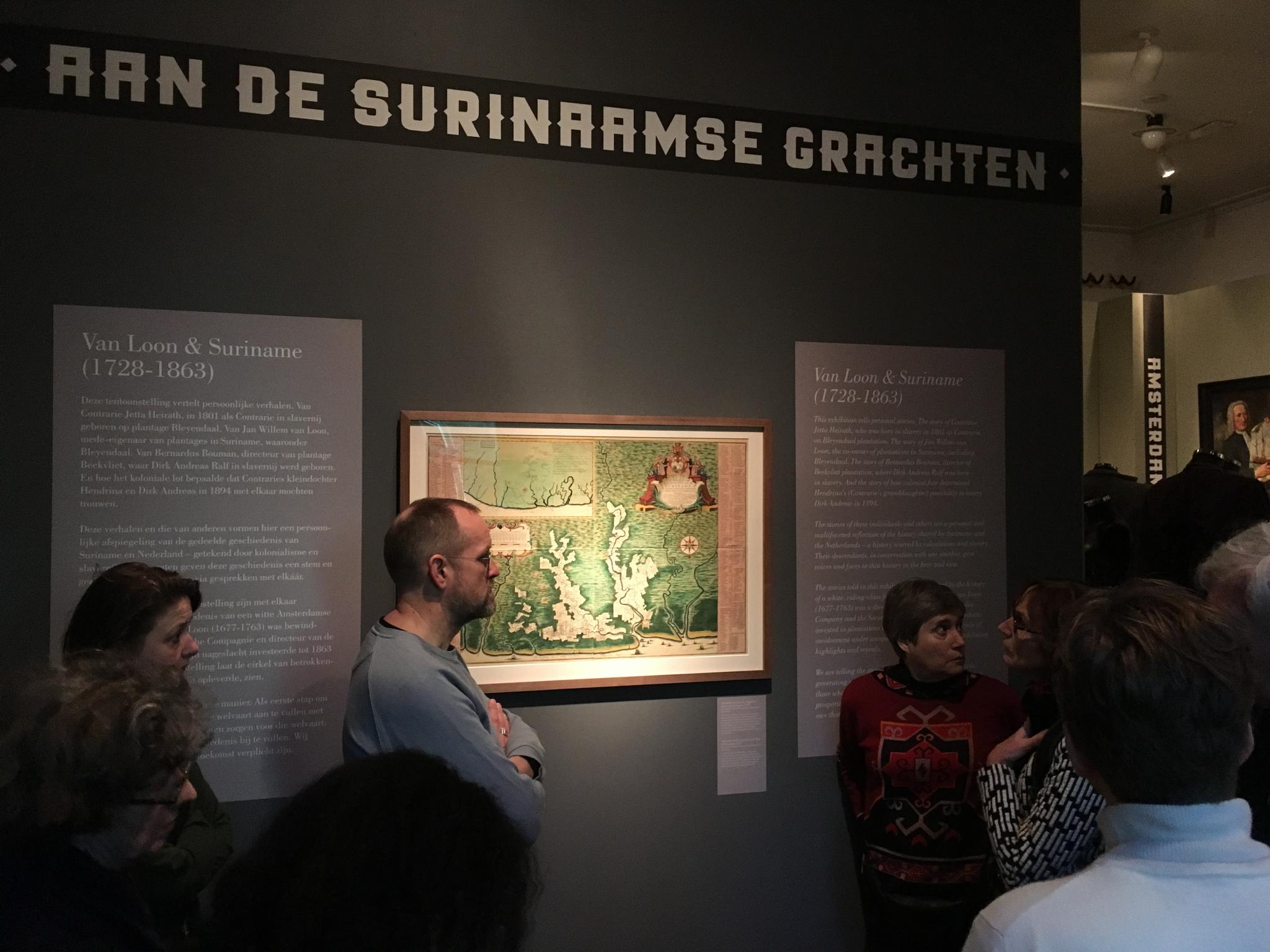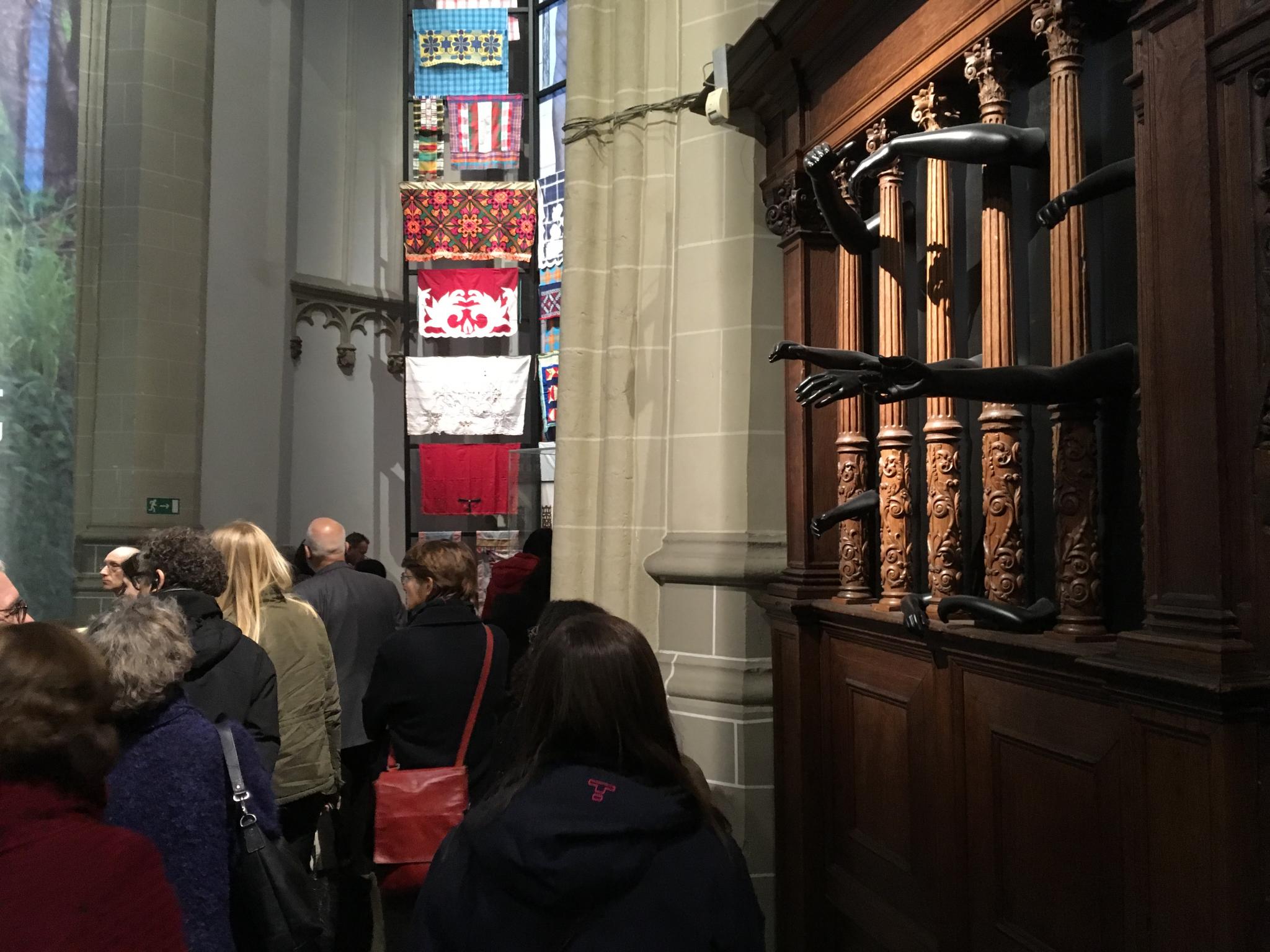Text by Raúl van Dijk Escoriza
On December 14th 2019 ICOMOS together with the Centre for Global Heritage and Development organised a guided tour of both the Aan de Surinaamse Grachten exhibition (Along the Surinamese Canals) at the Van Loon Museum (Amsterdam) and De Grote Suriname Tentoonstelling (The Great Suriname Exposition) at the Nieuwe Kerk Amsterdam. Starting at the Van Loon Museum.
Located in a monumental 17th century mansion alongside one of Amsterdam’s main canals, the function of the Van Loon museum is to showcase the history of the Van Loon family—an influential merchant family with royal ties—from the 16th century onwards. Their considerable commercial and political assets in the triangular slave trade and the Surinamese plantation economy form, hence, the backbone of their small, but fascinating, exhibition on the former Dutch colony. Even though not a single member of the family ever set foot in South America.
This last fact is what makes the exhibition such a special one. They do narrate the history of Suriname from the perspective of Dutch financial investors, international trade and the economic wealth and activity it brought to Amsterdam. What is attempted with this approach is to showcase—with all respect to the sorrow and pain inflicted in the process—that the plantation economy was a phenomenon that cannot exclusively be placed in former colonial places, but that it is irreversibly tied, and co-responsible for among other things, Amsterdam’s financial success, and which reverberations are still felt to this day. In other words, the success of Amsterdam is also the heritage of Suriname, and, hence as much of its history as Amsterdam’s.

De Grote Suriname Tentoonstelling on the other hand is a more classic exhibition, as it chronologically narrates the events that took place in the region now known as the Republic of Suriname. Starting in the pre-Columbian period, it takes you through the early, and late colonial periods and ends by briefly mentioning contemporary times. The themes that it addresses mostly revolve around slavery, although it attempts to mention all different ethnic, social, and cultural groups found in country past and present as well, plus some short but honourable mentions of the country’s economy, and scientific and political events.
However, it must be said that although the quality of the exhibited objects and their arrangement are impeccable, the forced summary of all the different facets of Suriname’s history make the presented narrative relatively shallow. This is counteracted by the immensely talented guides employed by the Nieuwe Kerk. Their willingness to engage with current social debates and tour participants, plus their erudite criticism of the exhibition itself allow the spectator to form an incredibly well rounded image of Suriname’s past.
Global histories obfuscate personal stories, micro histories have difficulties disclosing common threads. However, when told together they create a very complete version of the past. The intriguing coaction between De Grote Suriname Tentoonstelling and the Aan de Surinaamse Grachten-exhibition is one of these rare instances. Together they narrate the turbulent past of what is now the Republic of Suriname, its inhabitants, and their place in global (trade) networks quite successfully, in the largest exhibitions on the subject in at least a decade.

